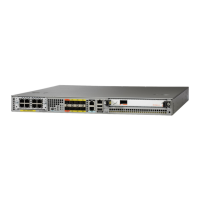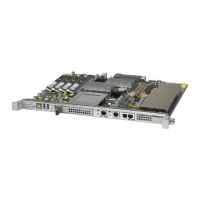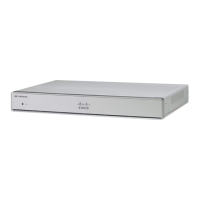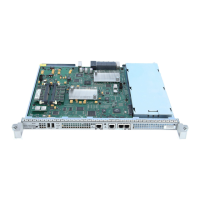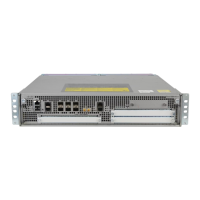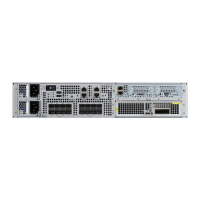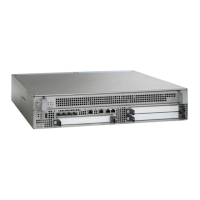20-24
Cisco 10000 Series Router Software Configuration Guide
OL-2226-23
Chapter 20 Configuring L2 Virtual Private Networks
Configuration Tasks for L2VPN
Figure 20-3 Ethernet VLAN QinQ Header
The IEEE 802.1Q Tunneling (QinQ) for AToM can be further explained as follows:
• QinQ Tunneling Based on Inner and Outer VLAN Tags, page 20-24
• Rewriting Inner and Outer VLAN Tags on QinQ Frames, page 20-24
QinQ Tunneling Based on Inner and Outer VLAN Tags
When handling incoming QinQ Ethernet traffic, the Cisco 10000 series edge router allows a customer
to choose a unique pseudowire endpoint to switch the traffic based on the combination of inner and outer
VLAN IDs. For example,
Figure 20-4 shows how a unique pseudowire is selected depending upon the
combination of inner (customer edge) and outer (service provider) VLAN IDs. Thus, traffic for different
customers can be kept separate.
Figure 20-4 QinQ Connection
Rewriting Inner and Outer VLAN Tags on QinQ Frames
When managing incoming AToM Ethernet QinQ traffic, the Cisco 10000 edge router:
1. Strips off the MPLS labels.
2. Allows the customer to rewrite both the inner and outer VLAN IDs before sending the packets to
the egress QinQ interface. Note this capability is provided only for AToM like-to-like Ethernet
QinQ traffic.
Support for these features is added in Cisco IOS Release 12.2(33). The QinQ AToM feature is a
like-to-like interworking case over AToM. This feature requires changes to the microcode to allow it to
overwrite two layers of VLAN tags on Ethernet QinQ traffic, transported across AToM pseudowires.
• On the ingress side—The packets preserve their L2 header with the two VLAN tags, and it is sent
across the pseudowire with VC type of 4.
270307
Dest MAC
(6 Bytes)
SRC MAC
(6 Bytes)
Type/
Length=
802.1Q Tag
Type
(2 Bytes)
Type/
Length
(2 Bytes)
Data
Type/
Length=
802.1Q Tag
Type
(2 Bytes)
Tag
Control
Info
(2 Bytes)
Tag
Control
Info
(2 Bytes)
802.1Q
802.1Q
270306
Cust
Service
Provider
Outer
vlan id
PE1
PE2
PW
MPLS
Pwire1
Pwire2
Pwire3
Pwire4

